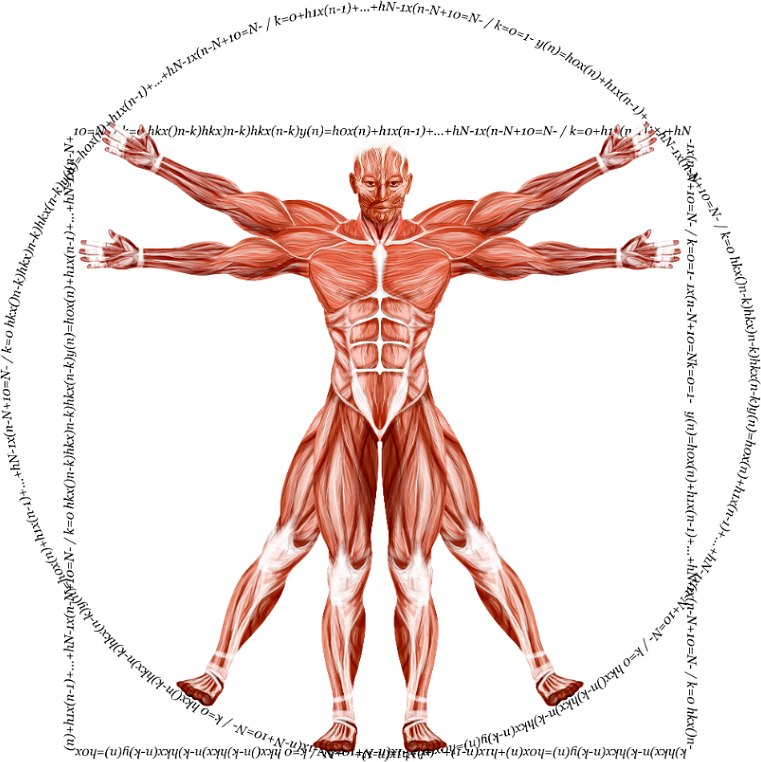Sculpt Your Upper Chest: Unlock Aesthetic Gains with Incline Workouts
Master upper chest workouts with incline presses, flyes, and push-ups to build a balanced, sculpted chest and enhance your upper-body strength.

Key Takeaways
- Targeting the upper chest is essential for a well-rounded chest development and can be achieved through specific exercises such as incline bench press and incline dumbbell flyes.
- Building strength and stability in the chest muscles is crucial for overall upper body strength and can be accomplished through compound movements like push-ups and chest dips.
- Improving shoulder health is important for preventing injuries and can be done by incorporating exercises that target the rotator cuff muscles and focusing on proper form during chest workouts.
- Creating a defined and sculpted chest requires a combination of high-volume training, proper nutrition, and incorporating isolation exercises like cable crossovers and chest flyes.
- Enhancing mind-muscle connection is key for maximizing chest development and can be achieved by focusing on the contraction of the chest muscles during each rep and using visualization techniques.
- Adding variation to your workouts is important for preventing plateaus and can be done by incorporating different angles, grips, and equipment into your chest exercises.
- Increasing range of motion during chest exercises can help in fully engaging the chest muscles and is best achieved through proper stretching, mobility work, and using a full range of motion during exercises without compromising form.
- Preventing plateaus in chest development requires constantly challenging the muscles with progressive overload, incorporating different training techniques, and ensuring adequate rest and recovery.
The upper chest, specifically the clavicular head of the pectoralis major, plays a pivotal role in creating a well-rounded, balanced, and aesthetically pleasing chest. Despite its importance, this area is frequently neglected in workout routines, leading to muscle imbalances, lackluster development, and a less defined upper body.
A strong and developed upper chest not only enhances your physique but also improves functional strength, posture, and overall upper-body symmetry. Whether you’re a beginner or an advanced lifter, training this specific muscle group can elevate your workouts and help you achieve your aesthetic and performance goals.
Targeting the upper chest requires more than simply adding random exercises to your routine. It involves understanding muscle mechanics, choosing exercises like the incline bench press and incline dumbbell flyes, and paying close attention to proper form and technique. While these movements emphasize the upper chest, other muscles like the anterior deltoids and triceps contribute to their effectiveness as compound exercises.
Incorporating variations like incline push-ups, resistance band movements, and angle adjustments can provide additional ways to engage the upper chest effectively.
This guide will cover the most effective exercises, techniques, and strategies to achieve noticeable and long-lasting results.
Building Strength and Stability
Compound Movements for Chest Strength
To develop chest strength, compound movements like bench presses and push-ups should be staples in any workout routine. These exercises engage multiple muscle groups simultaneously, promoting overall strength gains while targeting the pectoral muscles. Compound lifts are particularly effective for building the foundational strength needed for upper chest training.
Stability Training for Enhanced Chest Strength
While strength-focused compound movements are key, incorporating stability exercises can complement your workouts by challenging your core and upper body simultaneously. Equipment like stability balls or balance boards can be used for exercises like push-ups to improve balance and neuromuscular control. However, heavy lifts like the bench press are better performed on stable surfaces to maximize strength and minimize the risk of injury.
A Solid Foundation for Better Performance
This combination of compound and stability exercises creates a strong foundation for overall chest development. Focusing on both strength and stability builds muscle while improving coordination, helping prevent injuries and enhancing performance in dynamic movements.
Improving Shoulder Health
Shoulder health is intricately linked to chest training because many exercises that target the pectoral muscles also engage the shoulder joints. Improper form or overtraining can lead to shoulder injuries, which can sideline an individual from their fitness goals.
To improve shoulder health while training the chest, exercises that promote shoulder stability and mobility should be included. Movements such as face pulls and external rotations with resistance bands are excellent for strengthening the rotator cuff muscles, which support the shoulder joint during pressing movements. Moreover, balancing pushing movements with pulling exercises like bent-over rows or pull-ups can prevent muscular imbalances and keep shoulders healthy.
By incorporating these strategies into your training routine, you’ll not only enhance your shoulder health but also support your chest development goals.
Creating a Defined and Sculpted Chest
A well-defined and sculpted chest is often a goal for many fitness enthusiasts. Achieving this aesthetic requires a combination of targeted strength training, proper nutrition, and consistent effort. For muscle definition, hypertrophy training—performing exercises with moderate weights for higher repetitions—is key.
Isolation exercises, such as cable flyes or pec deck machines, are particularly effective for creating focused tension in the chest muscles. Although these movements heavily engage the pectorals, other supporting muscles are also activated. Coupling these exercises with proper nutrition, including maintaining a caloric deficit to reduce overall body fat, is crucial for achieving a chiseled look.
By combining targeted training with balanced nutrition, you can achieve a well-defined and aesthetically pleasing chest.
Enhancing Mind-Muscle Connection
The mind-muscle connection refers to consciously focusing on engaging specific muscles during exercise. This is especially crucial for effective chest training, as it can significantly enhance muscle activation and overall workout results.
To improve, focus on feeling your chest muscles contract during each repetition rather than simply performing the movement. Slowing down the tempo or pausing at the peak of a contraction can enhance this connection. Visualization techniques—mentally picturing your chest contracting while lifting—can further prime the muscles for activation. Lighter weights may be helpful initially to prioritize form and connection before progressively increasing loads.
By mastering the mind-muscle connection, you can maximize gains in chest strength and size.
Adding Variation to Your Workouts
Variety is essential for continuous progress and preventing plateaus. For chest training, alternating between barbell and dumbbell variations of core movements like bench presses can prevent monotony and stimulate different muscle fibers.
Experimenting with equipment like cables or resistance bands can further enhance your workouts by providing unique resistance angles for exercises like flyes. Incorporating supersets or circuit training increases workout intensity, building endurance and anaerobic capacity. Changing grips and angles also targets different parts of the chest.
Regularly introducing new elements into your routine keeps workouts fresh and ensures long-term progress.
Increasing Range of Motion
Increasing range of motion (ROM) in chest exercises enhances muscle engagement and promotes overall strength gains. Performing movements through a full ROM rather than partial ones recruits more muscle fibers, particularly in the stretched position.
For example, lowering the bar fully during bench presses or reaching maximum depth during incline push-ups can improve chest activation. Dynamic stretches, foam rolling, or mobility exercises like band pull-aparts should be incorporated into warm-ups to enhance flexibility and minimize injury risks.
Maximizing ROM while maintaining strict form ultimately leads to better hypertrophy and performance.
Preventing Plateaus in Chest Development
To prevent plateaus, continuously challenging your muscles is essential. Progressive overload is a proven method where weight, repetitions, or intensity are systematically increased over time. Additional techniques, such as modifying exercises or adjusting rest periods, keep the workouts effective and engaging.
Incorporating deload weeks—periods of reduced intensity—allows your body to recover while priming it for future growth. By remaining adaptable and responsive to your training progress, you can consistently achieve chest development goals.
Building a Stronger Chest with Purpose
Developing your upper chest is more than a vanity project—it’s about creating a balanced, strong, and functional physique. From incline bench presses to isolation exercises, this article emphasized that a well-rounded chest requires targeted effort and a thoughtful approach.
The importance of proper form, progressive overload, and variety cannot be overstated, as they are the foundation for long-term success in chest development.
Many lifters fall into common pitfalls, such as neglecting the upper chest, overtraining on stable flat surfaces without adequate variation, or assuming a single movement is enough to target the entire chest. Another misconception is that high-volume workouts alone can guarantee muscle definition without attention to nutrition and recovery. By layering smarter strategies into your routines—including mobility work, proper angle adjustments, and engaging the mind-muscle connection—you can get better results with fewer plateaus.
What’s even better is unlocking hidden benefits like improved posture, shoulder health, and overall strength as a byproduct of focused upper chest training. With a balanced approach, these small yet pivotal details add up to big improvements over time.
Take the guesswork out of your training and let technology help you achieve these results faster. The Dr. Muscle app automates everything discussed here and more, offering personalized, science-based workout plans tailored to your goals. Try it free today and start training smarter, not harder!
FAQs:
What are the best exercises for targeting the upper chest?
Incline bench press, incline dumbbell flyes, and incline push-ups are some of the best exercises for emphasizing the upper chest. These movements target the clavicular head of the pectoralis major while also engaging supporting muscles like the anterior deltoids and triceps. Adjusting the bench to a 30–45 degree angle optimizes upper chest activation.
Why is training the upper chest important?
The upper chest is essential for achieving balanced chest development and enhancing upper-body aesthetics. Strengthening this area can improve shoulder stability, posture, and symmetry, which are valuable for both performance and appearance.
Can beginners perform incline exercises effectively?
Yes, beginners can perform incline exercises by starting with lighter weights or bodyweight movements like incline push-ups. Mastering proper form and gradually increasing intensity ensures safe and effective results.
How do incline workouts strengthen the chest and shoulders?
Incline exercises, such as bench presses or dumbbell flyes, emphasize the upper chest while also engaging the anterior deltoids and triceps. These compound movements improve upper-body strength by incorporating multiple muscle groups simultaneously.
How can I make incline exercises more accessible?
Incline push-ups and resistance band movements are excellent alternatives for those without access to gym equipment. These exercises allow individuals of all fitness levels to train their upper chest effectively at home or on the go.
Do stability exercises improve chest strength?
Stability exercises, like performing push-ups on a stability ball, engage supporting muscles such as the core. While beneficial for overall neuromuscular control, they are not as effective as performing strength-focused lifts (e.g., bench press) on stable surfaces for building chest strength.
How can I prevent plateaus in chest development?
To avoid plateaus, incorporate progressive overload by increasing weight, reps, or intensity. Adding variety to your exercises, modifying angles or grips, and ensuring adequate recovery are also critical for consistent progress.
